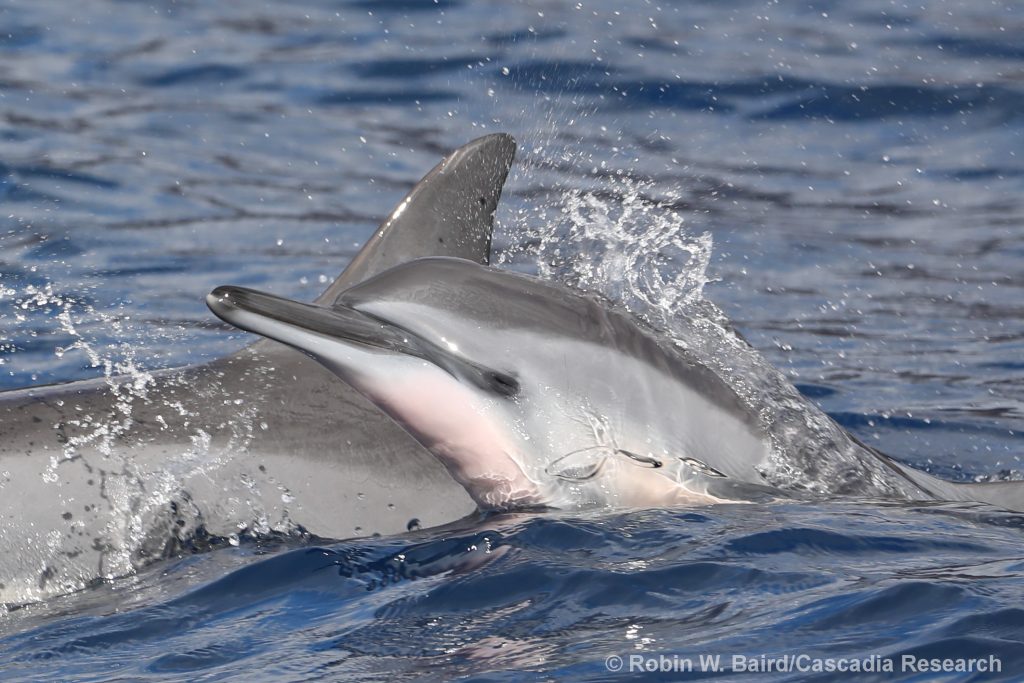
We'll be undertaking a short field project off Wai‘anae, O‘ahu, from June 20-29. This project is a bit different from our normal efforts, in that we'll be focusing on using a new tagging system, developed by Randy Wells of the Brookfield Zoo Chicago's Sarasota Dolphin Research Program and Michael Moore of Woods Hole Oceanographic Institution, to deploy single-pin finmount satellite tags to the dorsal fins of several smaller species, including spinner dolphins, bottlenose dolphins, and pantropical spotted dolphins. The tagging system, called the TADpole, deploys a single-pin tag onto the dorsal fin of bowriding dolphins, and has previously been used successfully by the Brookfield Zoo Chicago's Sarasota Dolphin Research Program with Atlantic spotted dolphins off Florida. These tags are expected to cause less tissue damage than our normal LIMPET tag deployments, and remain attached for longer than LIMPET tags on smaller species. We have previously used LIMPET tags on several species of small odontocetes in Hawai‘i, including bottlenose dolphins, pantropical spotted dolphins, and rough-toothed dolphins, with attachment durations that average about two weeks. We expect (and hope) that attachment durations with the single-pin finmount tag will average at least twice that time. The photo below shows one of these single-pin finmount tags on an Atlantic spotted dolphin in the Gulf of Mexico (with thanks to the Brookfield Zoo Chicago's Sarasota Dolphin Research Program for sharing this photo).
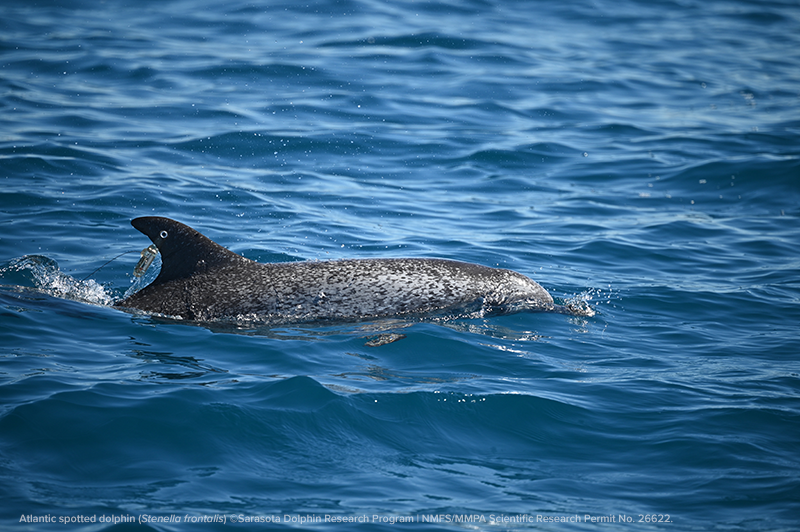
We will have three different types of finmount tags we are deploying, location-only Argos tags (the Wildlife Computers SPOT6 tags), a SPLASH tag that also transmits dive data, and a tag that also includes Fastloc®-GPS locations, to answer questions related to movements around and among the islands, to examine inshore/offshore movements (particularly for spinner dolphins), and to study diving behavior. Although we will primarily be focusing on deploying finmount tags on small odontocetes using the TADpole system, we'll also be working with other species of whales or dolphins we encounter, and may deploy LIMPET satellite tags on false killer whales, beaked whales, killer whales, or sperm whales, if we encounter them.
Although we are in the 27th year of our Hawai‘i odontocete research, this will only be the eighth year we've had a dedicated field effort off O‘ahu. Our first project off O‘ahu was in April 2002, and we returned for field projects there in May 2003, October 2010, January and February 2015, January and October 2016, November 2017, and March 2023. Since 2024, one of our team (Mark Mohler) has also been doing occasional 'rapid response' effort off O‘ahu when sightings of high priority species are seen.
The research team for this project will include Randy Wells and Aaron Barleycorn of the Brookfield Zoo Chicago's Sarasota Dolphin Research Program, Mark Mohler, Colin Cornforth, and Robin Baird of Cascadia, and a number of volunteers. This project is funded by Dolphin Quest, a contract from the State of Hawai‘i (specifically to study false killer whales), Brookfield Zoo Chicago and donations to Cascadia Research Collective.
If you are going to be on the water off Wai‘anae during this period, please call if you see any of these less-commonly encountered species! If you don't have a cell phone number for the team, please reach out to Robin Baird at the email below ahead of time. If you have any questions, please contact Robin Baird at rwbaird (at) cascadiaresearch (dot) org.
June 27th update
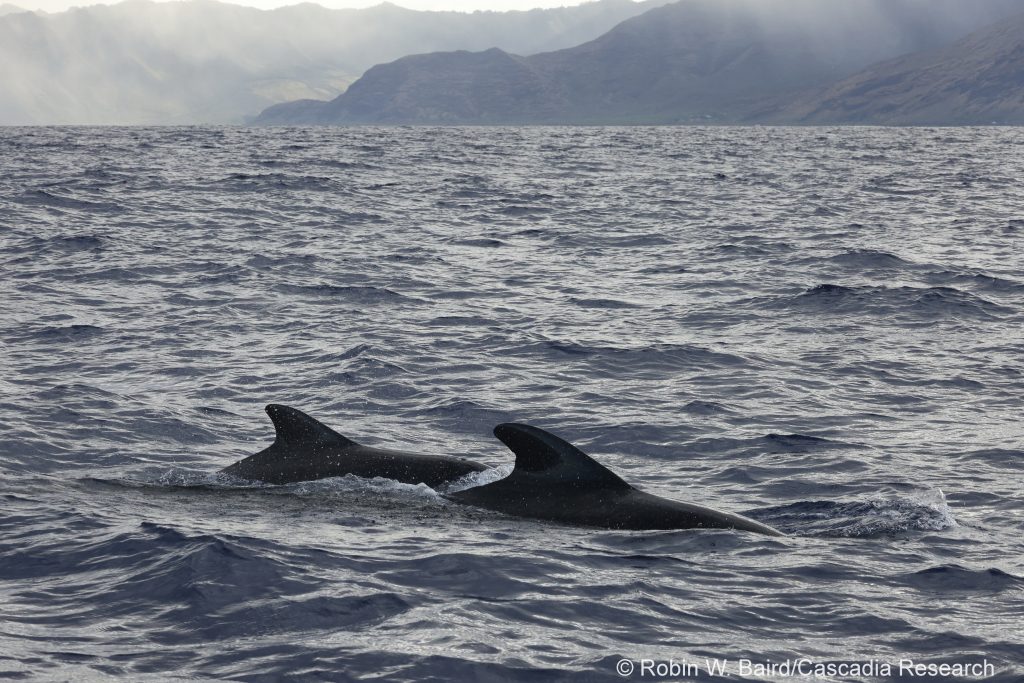
It has been a busy few days. We've tagged five additional spinner dolphins (and we'll update the live map below with these), and are now receiving data from nine different individuals. Today we also encountered two new species for the trip, including two groups of short-finned pilot whales (see photo above).
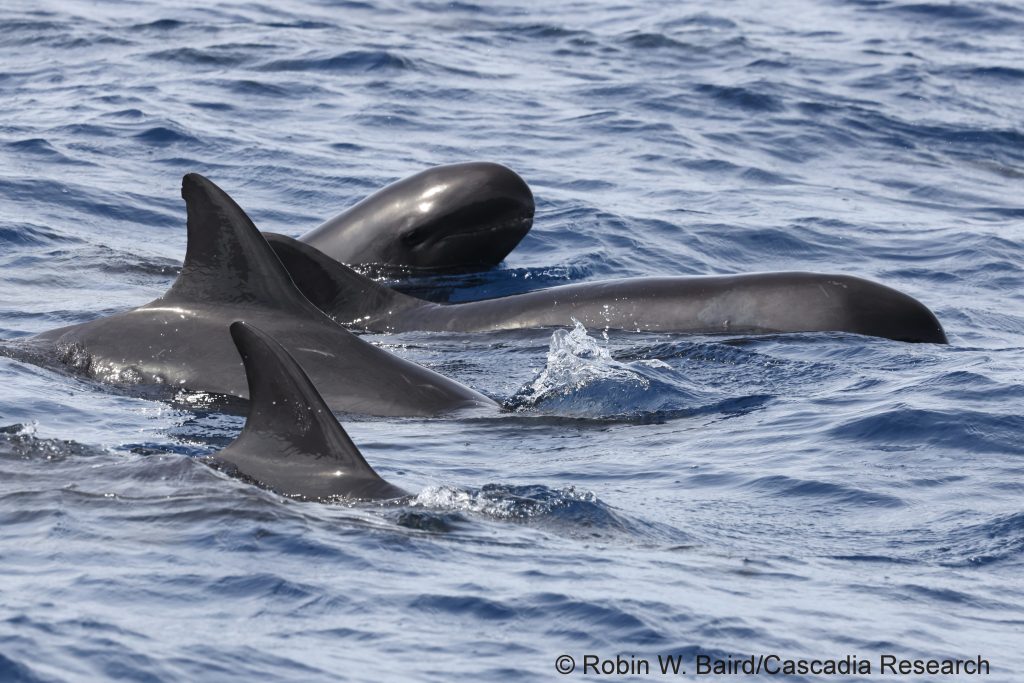
We also encountered a group of pygmy killer whales! There is a small resident population that lives around O'ahu and Penguin Bank - we were able to get identification photos of 15-20 individuals to add to our catalog.
June 23rd update
Over the last three days we've encountered spinner dolphins each day (as well as had sightings of pantropical spotted dolphins and bottlenose dolphins), and have been able to deploy an additional Finmount satellite tag (bringing the total to four). The live map above shows the movements of these four dolphins over the last few days, showing how quickly the groups are moving around the island. Alternatively, you can view the live map in a separate webpage by clicking here.
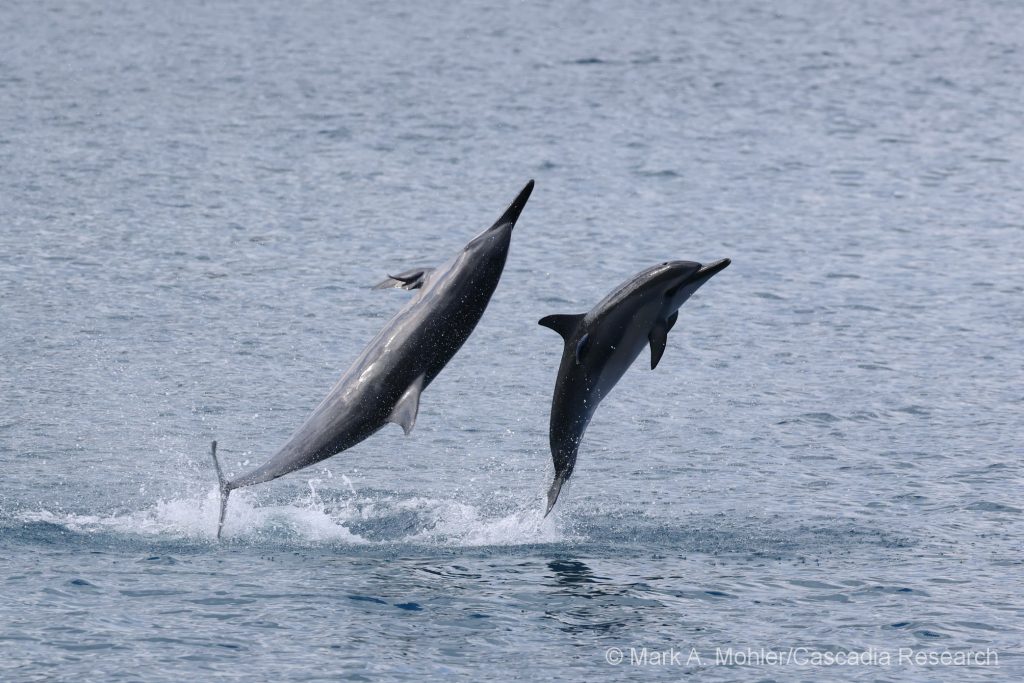
As well as tagging, we are taking photos both for individual photo-identification, and to document behavior - this image shows two spinners trying to dislodge remoras (the adult on the left spinning, the juvenile on the right jumping).
June 20th update

Our first day on the water exceeded our expectations! We were able to get three Finmount satellite tags on spinner dolphins, in two different groups. To the best of our knowledge, these are the first satellite tags deployed on spinner dolphins anywhere, and will provide new information on movements of this species! It has been less than 24 hours since the tags were deployed, so not a lot to report yet, but we'll be sharing maps of movements and other information on the tags over the coming weeks.

We also encountered a group of false killer whales! We were able to get ID photos of about 15 individuals - at least some we recognized as members of Cluster 3 of the endangered main Hawaiian Islands population.